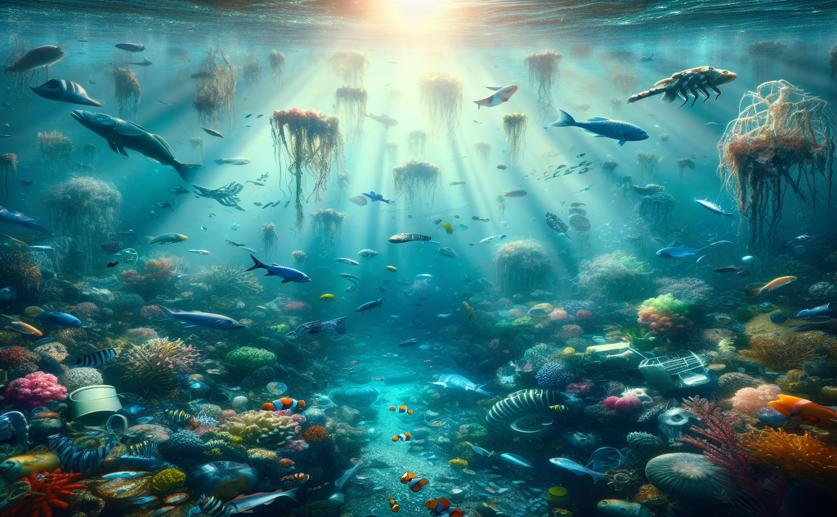Cancer Jumps Between Sea Creatures in Polluted Waters

Image Source: Natural Science News, 2024
Marine ecosystems are facing a silent but potentially devastating threat: the spread of cancer among shellfish. This isn't cancer as we typically understand it, affecting individuals, but rather a contagious form that jumps from one animal to another. Researchers from the Univ Montpellier[1] have turned their attention to a specific type of contagious cancer known as Mytilus trossulus Bivalve Transmissible Neoplasia 2 (MtrBTN2). This disease has been found to affect multiple mussel species across the globe, and the recent study aims to unravel how it spreads and persists, particularly in the bustling environments of ports.
MtrBTN2 is not a new discovery. Earlier studies have documented its presence in various Mytilus species, revealing that it can cross oceans and establish itself in new populations[2][3]. These findings have raised concerns about the role of human activities, particularly maritime transport, in the inadvertent spread of marine diseases. The latest research builds on these concerns, focusing on the French Atlantic coast, where mussels live in a complex hybrid zone of two species, M. edulis and M. galloprovincialis.
The study found that MtrBTN2 was present in both mussel species, likely due to their close proximity along the coast. However, a striking pattern emerged: ports showed a higher prevalence of the disease. One location, a shuttle landing dock, appeared to be a hotspot for the cancer. Interestingly, natural mussel beds were mostly free of the disease, except for those near this hotspot, hinting at a spillover effect from the port.
Ports, with their high density of mussels, stressful conditions, and sheltered waters, may inadvertently create the perfect storm for MtrBTN2 to thrive and spread. The study suggests that ships could be unwitting carriers of the disease, with biofouling on hulls and docks providing a pathway for MtrBTN2 to hitch a ride to new locations. This idea of ships as vectors for marine parasites isn't new. Previous research has shown that ships' ballast water is teeming with a variety of parasitic taxa, highlighting the role of maritime traffic in the global dispersal of marine diseases[4].
The Univ Montpellier study adds a crucial piece to the puzzle by identifying ports as potential epidemiological hubs for MtrBTN2. It underscores the need for measures to prevent biofouling and manage ballast water discharge, which could help limit the spread of this and other marine pathogens. The findings also call for further research into the fate of these cancer cells once they arrive in new environments and the effectiveness of current treatment systems in curbing their colonization.
In essence, the study not only confirms the presence of MtrBTN2 in a new geographic area but also suggests a mechanism for its spread that implicates human maritime activities. It builds on the foundation laid by earlier research, which has documented the disease's presence in other parts of the world and its potential to reach epidemic levels[2][3]. By pinpointing ports as hotspots for the disease, the research from Univ Montpellier offers a clear direction for future efforts to control the spread of transmissible cancers in marine ecosystems.
In conclusion, the spread of MtrBTN2 along the French Atlantic coast is a stark reminder of the interconnectedness of our global marine environments and the unintended consequences of human activity. As we continue to explore the oceans and exploit their resources, studies like this one are vital in guiding us towards more sustainable and responsible practices that protect the health of marine life and, by extension, our own.
HealthEcologyMarine Biology
References
Main Study
1) Marine transmissible cancer navigates urbanized waters, threatening spillover.
Published 28th February, 2024
Journal: Proceedings. Biological sciences
Issue: Vol 291, Issue 2017, Feb 2024
Related Studies
2) Genetic features of bivalve transmissible neoplasia in blue mussels from the Kola Bay (Barents Sea) suggest a recent trans-Arctic migration of the cancer lineages.
https://doi.org/10.1111/mec.17157
Related Articles





 24th January, 2024 | Greg Howard
24th January, 2024 | Greg Howard